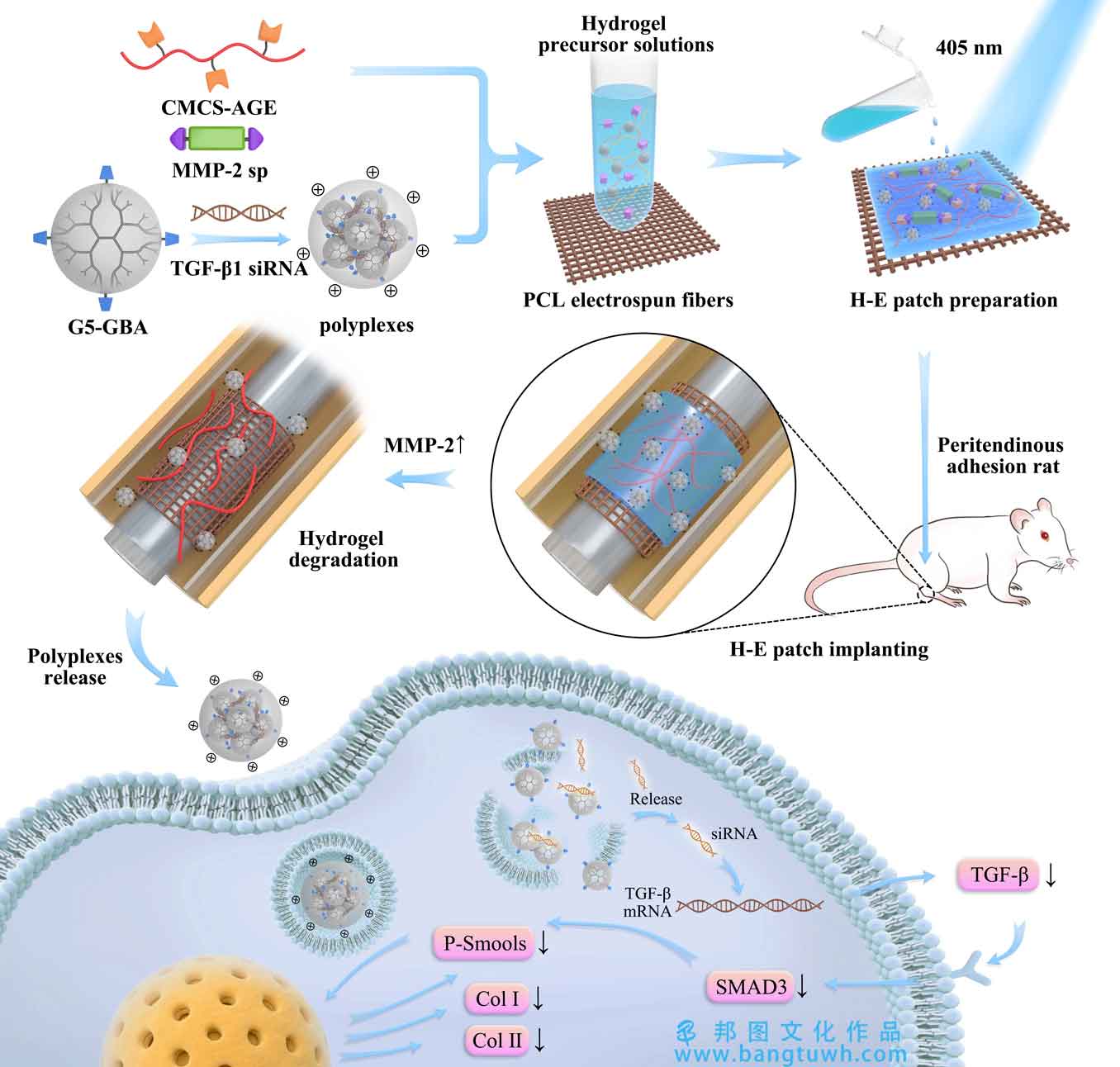
科研绘图sci画图作图学术杂志封面设计toc示意图文章配图医学动画





bio‐derived hydrogel patch systems exhibit promising potential in localized drug delivery for the prevention and treatment of various diseases. however, the uncontrolled release from the hydrogel patch both in time and space, is not an optimal strategy for peritendinous anti‐adhesion, leading to transient effect and unnecessary diffusion of therapeutics. here, an innovative composite anti‐adhesion patch is designed for on‐demand and unidirectional polyplexes delivery to inhibit fibroblasts proliferation and collagen deposition by silencing fibrosis gene transforming growth factor‐β1 (tgf‐β1). firstly, a metalloproteinase‐2 (mmp‐2) degradable hydrogel is prepared by crosslinking allyl glycidyl ether (age) modified carboxymethyl chitosan (cmcs‐age) with mmp‐2 substrate peptide cplglagc (mmp‐2 sp). then, the hydrogel loading tgf‐β1 sirna polyplexes are attached onto polycaprolactone (pcl) electrospun fibers to form a composite bilayer patch. the hydrogel–electrospun fibers (h–e) patch shows mmp‐2‐responsive and unidirectional release behaviors of encapsulated tgf‐β1 sirna polyplexes and associated gene silencing effect on tgf‐β1, leading to the inhibition of fibroblasts proliferation. moreover, after implanting the h–e patch by wrapping the repaired tendon, the formation of adhesion tissue is responsively attenuated in mmp‐2 overexpression microenvironment. this study presents a promising approach employing a composite bilayer patch with on‐demand and unidirectional delivery strategy for peritendinous anti‐adhesion.



微信扫一扫,加设计师好友
17621261539
周一至周五8:30-18:00

提升“研值”

工作人员将在1个小时内联系您。

